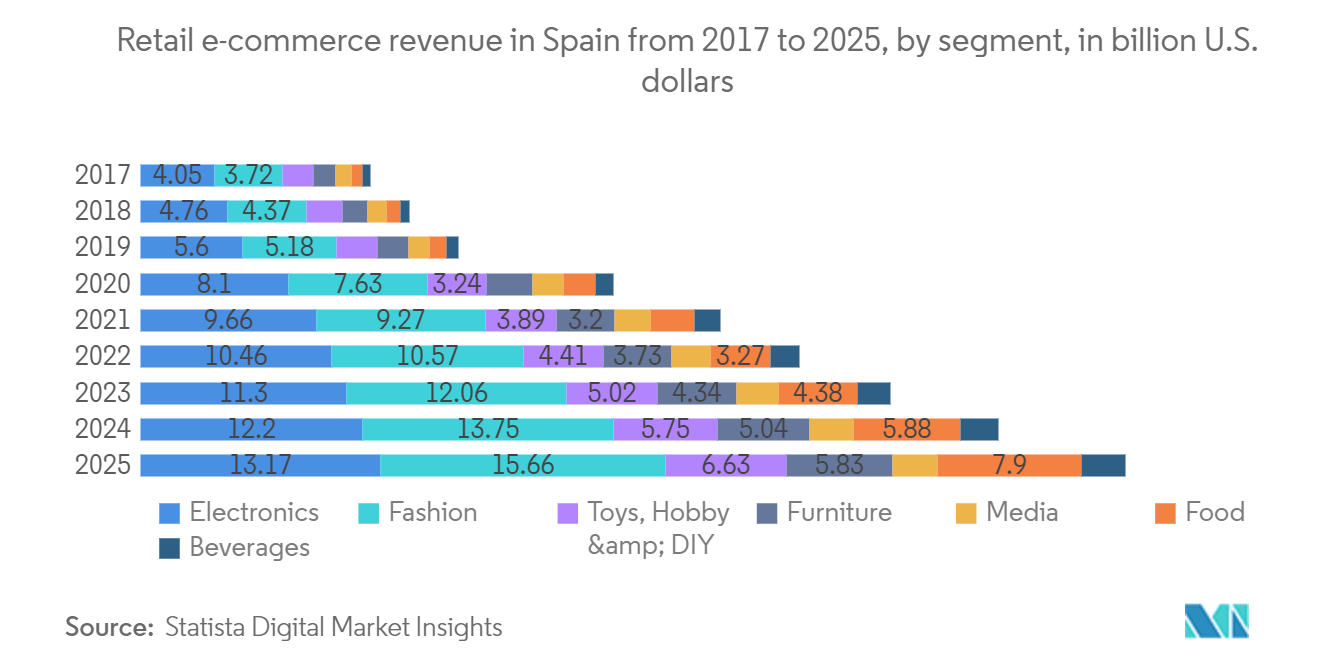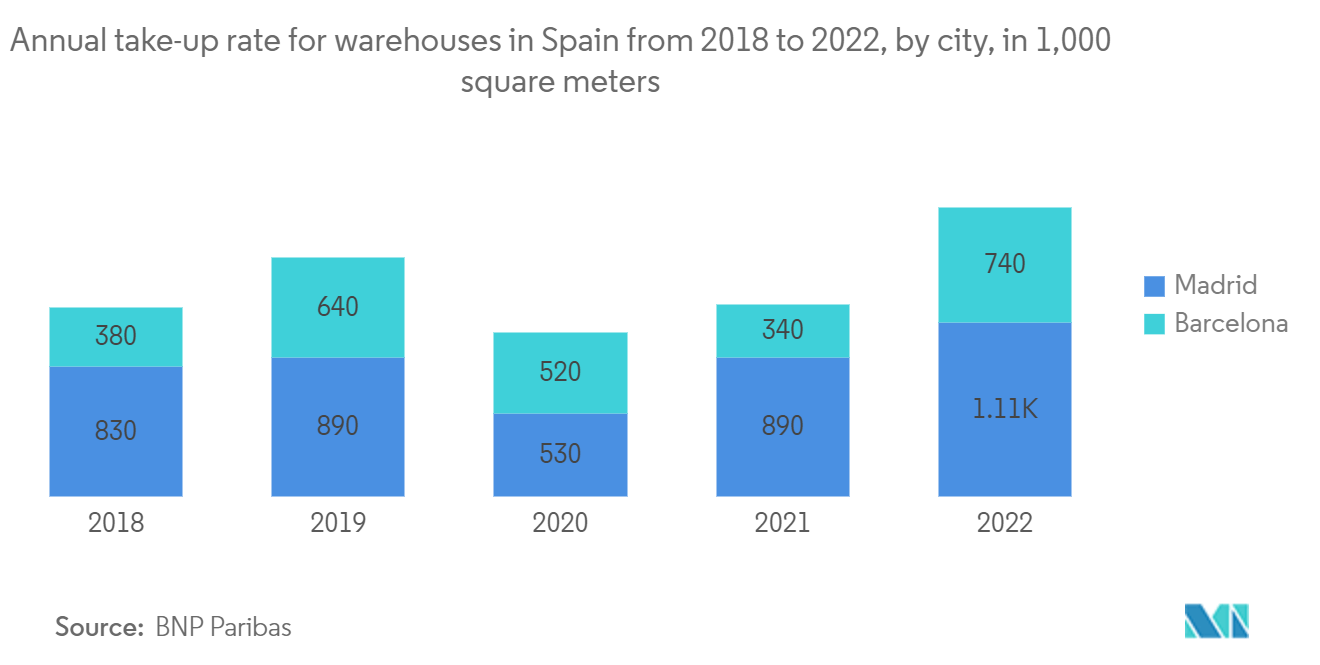Market Trends of Spain Warehousing Industry
Demand for warehousing is increasing as the e-commerce market grows.
- In 2022, the number of eCommerce users in Spain reached 30 million. Internet penetration is expected to be 83%, with eCommerce penetration at 63%. By 2025, the number of eCommerce consumers is predicted to increase by 25% to 37 million.
- Spain is the 16th largest eCommerce market, with a projected value of USD 37,615.7 million by 2023, surpassing the Netherlands. Within the Spanish e-commerce market, e-commerceDB considers five markets. Fashion is the most important market, accounting for 26.9% of Spanish eCommerce sales. It is followed by food and personal care (26.4%), electronics & media (24.6%), furniture & appliances (12.4%), and toys, hobby & DIY (9.7%).
- The potential for e-commerce in Spain opens up several options for SMEs, big corporations, and startups. The transition in demand from brick-and-mortar retail to e-commerce lately accelerated significantly. And the shift in buying habits that occurred in the last year is here to stay.
- As new facilities are built, delivery times can be shortened, which, by raising service levels and consumer expectations, can drive further e-commerce growth and, in turn, demand for more modern logistics space.

Surge in demand for refrigerated warehouses
- The demand for micro-level warehouse development at various centers is what fuels the market. Additionally, the sales of goods through e-commerce are what drives the market. Cold Storage growth is expected to be close to 20% CAGR for the industry. Cold storage is also thought to be more expensive than dry storage. Corporations will look forward to outsourcing the operation to experts such as Cantek Group, NDL, NewCold Advanced Logistics, and others.
- Europe's free trade agreement among EU member nations boosted commerce, leading to the expansion of cold storage in Europe. The cold chain industry in Europe is expected to reach USD 112 billion, creating investment possibilities for firms in auxiliary industries such as cold storage and cold transportation.
- The importance of the retail industry has been clear in recent years. The surge in health issues left the customers with little alternative but to eat fresh food, beverages, and drinks. For example, worldwide milk output increased by 1.7%, and as demand for perishable commodities, food, and drinks rises, so does the demand for cold storage.
- Because merchants are frequently late in maintaining product quality, the expansion of cold storage in Europe and other areas of the world is unavoidable. Market takers would be fish and meat providers, followed by the dairy industry, pharmaceuticals, and processed food goods.
- The three main drivers that would work as catalysts for growth in the cold storage business are customer preferences, the need to increase shelf life, and quality enhancement.


